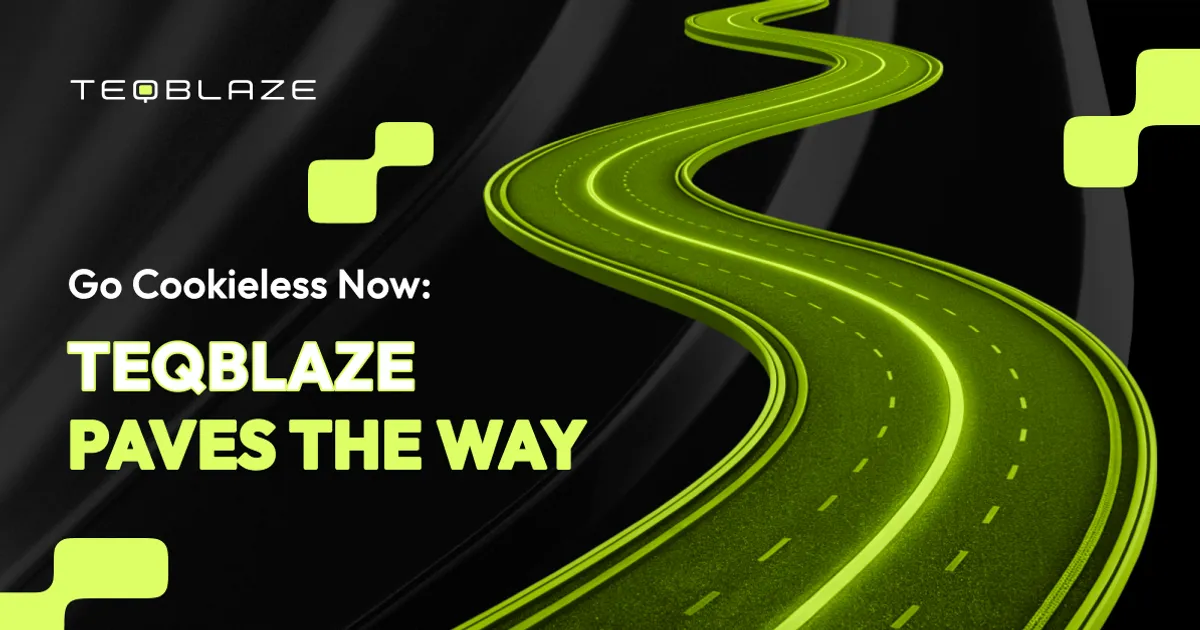In recent years, the digital marketing landscape has experienced a seismic shift, comparable to the sands of a vast desert constantly rearranging. One of the most significant changes on the horizon is the deprecation of third-party cookies, a move led by Google. Originally, Google had set a deadline to phase out these digital breadcrumbs by the end of 2024, but they have extended it to 2025. While the exact timeline remains uncertain, the industry has been granted more time to adapt to these changing tides. However, this is not a time for complacency, but a call to action.
The start of the end for third-party cookies became a “real thing” when Firefox and Safari blocked their usage in 2020, signaling a shift towards enhanced privacy and data security. This move means these web browsers no longer store third-party cookies, and Google’s decision aligns with this broader trend of increasing user privacy protections.
Despite the delay, it’s crucial for businesses not to rest on their laurels. The extended timeline should be seen as a golden opportunity to get two ducks in a row and prepare for a future where third-party cookies are a thing of the past. This preparation is not just important; it's essential for maintaining marketing effectiveness and ensuring compliance with evolving privacy regulations. By taking a proactive approach now, companies can explore alternative strategies, such as contextual targeting, which promises to deliver relevant ads while respecting user privacy. This early start will position businesses to ride the wave of change and thrive in the new digital marketing era.
Key points:
Google's delay of full cookie deprecation is an opportunity to be proactive, not complacent.
A cookieless strategy ensures future-proofing and a competitive edge.
Contextual targeting offers increased relevancy, brand safety, and a future-proof approach.
Why prepare now?
The urgency to prepare for a cookieless future cannot be overstated. Here’s why starting now is crucial.
The current landscape
Although cookies are actively used, they are no longer as dominant as once. Currently, only around 42% of websites leverage cookies, which means 58% of web pages are already out of reach for cookie-based targeting. This significant portion highlights that the cookieless future is not just on the horizon; it’s already here.
Additionally, user attitudes towards privacy are shifting dramatically. Increasing numbers of users are becoming more concerned about their privacy and are choosing to avoid sharing their data. A remarkable 65% of Deloitte study respondents express serious worries about the excessive usage of cookies and the potential impact on their personal data. Many simply ignore cookie consent windows altogether, rendering cookie-based strategies ineffective for a growing audience segment.
The imminence of change
When Google initiates the final phase-out of cookies, it won’t mark the beginning of a new era but the culmination of an ongoing shift. Advertisers need to recognize that there is no more time to delay. The transition to alternative targeting methods is imperative, not just for compliance, but for staying competitive in a rapidly evolving market.
The importance of proactive planning
With Google's deprecation of third-party cookies now set for 2025, some businesses might be tempted to delay their preparations. However, this delay should be considered a unique opportunity, not a reprieve. Being proactive in planning for a cookieless future is not just important, it's a game-changer. It can give businesses a significant advantage over their competitors, allowing them to refine their strategies, gather data, and adjust their tactics well before the deadline. This head start ensures a smoother transition and provides a competitive edge as companies that lag behind scramble to catch up.
Firstly, the digital marketing landscape is highly competitive. Early adopters of new strategies, like contextual targeting, can refine their approaches, gather data on what works, and adjust their tactics well before the deadline. This head start ensures a smoother transition and provides a competitive edge as companies that lag behind scramble to catch up.
Moreover, adapting to a cookieless world involves more than flipping a switch. It requires a comprehensive reevaluation of marketing strategies, technologies, and partnerships. Businesses can methodically plan and execute these changes by starting now, ensuring they are well-prepared to maintain their marketing effectiveness and efficiency.
Navigating privacy regulations
Across the globe, data privacy laws are becoming more stringent, with regulations like the General Data Protection Regulation (GDPR) in Europe and the California Consumer Privacy Act (CCPA) in the United States setting high standards for data protection.
By beginning the transition to cookieless strategies early, businesses can ensure they comply with these regulations well ahead of time. This proactive approach helps avoid potential legal pitfalls and the hefty fines associated with non-compliance. Additionally, it positions companies as leaders in privacy, building trust with consumers increasingly concerned about how their data is used.
Adopting cookieless strategies like contextual targeting aligns with these regulations and enhances brand reputation. Consumers are more likely to engage with brands that prioritize their privacy and demonstrate transparency in their data practices. By preparing now, businesses can cultivate a privacy-first approach that resonates with today’s more informed and privacy-conscious consumers.
Embracing contextual targeting
One of the most promising alternatives to third-party cookies is contextual targeting. This method displays ads based on the web page's content rather than the user’s browsing history. Preparing now allows businesses to fully understand and leverage this approach's benefits.
Increased Relevancy. Contextual targeting ensures that ads are relevant to the content the user is engaged with, leading to higher engagement rates. For instance, an ad for running shoes displayed on a fitness blog is likely more effective than one based on past browsing behavior. Another example could be placing an ad for kitchen appliances on a cooking website where readers are already interested in culinary topics. By implementing contextual targeting now, businesses can fine-tune their strategies to maximize relevancy and effectiveness.
Brand Safety. With contextual targeting, businesses have greater control over where their ads appear. This control significantly reduces the risk of ads being displayed alongside inappropriate or harmful content, a problem that has plagued programmatic advertising reliant on third-party cookies. For example, a family-friendly brand can ensure its ads are shown on websites with suitable content, avoiding placement on sites with adult or controversial material. By transitioning early, companies can safeguard their brand reputation and ensure their ads are placed in suitable contexts.
Future-Proofing. As privacy regulations become more stringent and third-party cookies phase out, contextual targeting is poised to become a mainstay of digital advertising. Early adoption allows valuable insights and expertise to accumulate, ensuring a seamless transition and continued marketing success.
Consider the example of a car manufacturer that traditionally relied on third-party cookies to target potential customers based on their past web activity. In a cookieless world, this manufacturer could shift to contextual targeting by placing ads on automotive news sites, car review blogs, and forums where discussions about car buying are prevalent. This ensures that the ads reach an audience interested in cars, leading to higher engagement and conversion rates.
Another example is a skincare brand that can place ads on beauty and wellness blogs or YouTube channels focusing on skincare routines and product reviews. This contextual relevance captures the audience's attention more effectively and enhances the brand's credibility by appearing in a trusted and relevant context.
Possible drawbacks of contextual targeting
Despite its numerous benefits, contextual targeting comes with certain disadvantages that businesses must consider. One major drawback is the limited personalization it offers. Unlike behavioral targeting, which tailors ads based on a user’s past behavior and preferences, contextual targeting cannot personalize ads to individual users. This often results in a one-size-fits-all approach, which may not be as effective for campaigns requiring a high degree of personalization. Additionally, the reduced precision in targeting can mean that ads might not always reach the most relevant audience segments, potentially decreasing their overall effectiveness.
Another issue is the risk of context misinterpretation. Automated systems might inaccurately interpret the context of a web page, leading to inappropriate ad placements. For instance, an ad for luxury products might appear on a page discussing financial struggles, creating a jarring and ineffective user experience. The effectiveness of contextual targeting heavily depends on the quality and accuracy of content analysis, and poor content categorization can result in suboptimal ad placements.
Scalability challenges also pose a significant disadvantage. Setting up and maintaining effective contextual targeting campaigns can be resource-intensive, requiring continuous monitoring and adjustments to ensure that ads remain relevant. Additionally, contextual targeting may not offer the same reach as cookie-based targeting, aggregating data across multiple sites to build comprehensive user profiles. This limitation can affect the scale and impact of marketing campaigns, making it harder for businesses to achieve the broad reach they might be accustomed to with traditional cookie-based strategies.
Finally, there are complexities in implementation. Implementing contextual targeting requires a high level of technical expertise and sophisticated tools to analyze content and serve relevant ads accurately. Integrating contextual targeting into existing marketing strategies and platforms can be complex and time-consuming, requiring significant changes to current workflows. These challenges necessitate a thoughtful and well-resourced approach to fully leverage the potential of contextual targeting. Change is inevitable, and implementing new practices in place of established, efficient ones demands meticulous planning and expertise. Navigating uncharted territory is always challenging.
TeqBlaze: your partner in a cookieless future
Navigating the shift away from third-party cookies requires a comprehensive and thoughtful approach. Companies starting early will be well-positioned to maintain their marketing effectiveness and build stronger, more trustworthy customer relationships. This is where TeqBlaze comes in.
TeqBlaze is dedicated to helping businesses transition smoothly into the cookieless future. Our team of experts specializes in creating and developing DSP platforms based on our white-label programmatic platforms with the contaxtual targeting module. By leveraging our expertise, businesses can seamlessly integrate contextual targeting into their broader advertising strategies, ensuring relevancy and effectiveness across all digital touchpoints.
Our comprehensive approach includes evaluating your current strategies, identifying the best contextual targeting opportunities, and implementing cutting-edge technologies to ensure a smooth transition. With TeqBlaze, you can confidently move towards a cookieless future, knowing that your marketing efforts are in expert hands.
Bottom line
The digital marketing landscape is evolving, and with Google's impending phase-out of third-party cookies, the urgency to adapt is palpable. Embracing contextual targeting offers a beacon of hope, blending privacy compliance with marketing effectiveness. Yet, it’s not without its hurdles—limited personalization, the potential for context misinterpretation, scalability issues, and implementation complexities can pose significant challenges.
Despite these drawbacks, contextual targeting's benefits—relevancy, brand safety, and future-proofing—are too compelling to ignore. Imagine a world where your ads seamlessly integrate with content, engaging users in a natural and unobtrusive manner. By pivoting now, businesses can stay ahead of the curve, turning potential pitfalls into opportunities for innovation and growth.
Navigating this transition requires expertise and strategic foresight. This is where TeqBlaze steps in. Our team of experts is dedicated to guiding you through the complexities of a cookieless future and ensuring your marketing strategies are cutting-edge and compliant. Don't wait until the last minute to adapt—start your journey today and secure your competitive edge.
Ready to future-proof your marketing efforts? Contact TeqBlaze now and let us help you craft a winning cookieless strategy. Your future in digital advertising starts here!

 Kate Pavlova
Kate Pavlova






